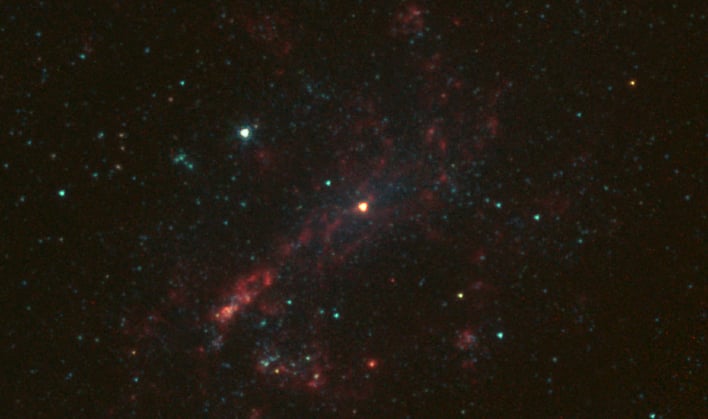A Trove Of Massive Black Holes Hiding In Plain Sight Is Blowing Astronomers’ Minds

The Milky Way galaxy is believed to have been created as smaller dwarf galaxies merged together over time. As a new dwarf galaxy falls in, such as one that resides in the Magellanic Clouds that can be seen in the southern sky, it may bring with it a central massive black hole, tens or thousands of times the size of our sun, with the potential to be swallowed by the central supermassive black hole at the center of the Milky Way.
However, the question of how often these dwarf galaxies actually contain a massive black hole has been unknown. This has led to a fundamental gap in our understanding of how black holes and galaxies merge together. Research led by a team at the University of North Carolina at Chapel Hill aims to close the gap as it finds that massive black holes are far more common in dwarf galaxies than previously believed.
Mugdha Polimer, lead author of the study and UNC-Chapel Hill Ph.D. student, proclaimed, "This result really blew my mind because these black holes were previously hiding in plain sight."
"Just like fireflies, we see black holes only when they're lit up, when they're growing, and the lit-up ones gives us a clue to how many we can't see," remarked UNC-Chapel Hill Professor Sheila Kannappan, Polimera's Ph.D. advisor and coauthor of the study.
The new findings came as undergraduate students working with Kannappan attempted to apply traditional tests to galaxy survey data. They realized that some of the galaxies were sending mixed signals, in that two tests indicated growing black holes, but a third indicated only star formation.
The solution presented by scientists was to utilize the all-sky Sloan Digital Sky Survey's emission line catalog. "Emission lines" refer to the bright lines that are visible in the spectra of stars. A phenomenon known as photoionization was then focused on, which occurs when an atom is electrically charged as radiant energy is absorbed, according to Space.com.
Astronomers examined the hydrogen and helium that is typically prevalent in dwarf galaxies, and then compared various elemental combinations and confirmed the work with theoretical simulations. The researchers indicated that their tests closely matched predictions that dwarf galaxies have black holes inside them.
You can read more about the study in the research paper that was submitted to The Astrophysical Journal on May 24, 2022.
Top image is of NGC 4395, the first dwarf AGN ever detected. Credit: NASA

